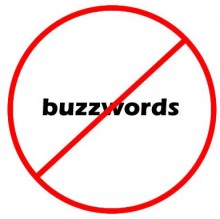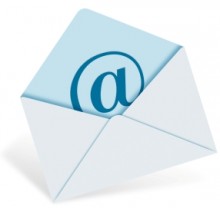
Most young startups needs 3 things: Money, a good idea and a dogged determination to see that idea through to completion. But what about publicity?
Some may argue that if an idea is good enough, people will discover it one way or another, and there may be some truth in this. But there’s little question that a spot of positive coverage can boost business and accelerate the word-of-mouth process.
What we’re talking about is public relations (PR). This could be in the form of a charismatic CEO who loves nothing more than courting the media, or an appointed PR firm that manages the publicity on a firm’s behalf. But in the case of young startups, they often won’t have the funds at their disposal for an experienced PR firm, whilst the company founder may be far more comfortable getting stuck into some Python programming than penning a press release.
And this is a key point. A young entrepreneur could be a world-class coder and have the biggest game-changing product since the wheel, but if they don’t know how to communicate their vision to the wider world, the path to profit can be that little less smooth.
The Next Web gets to meet some of the most exciting tech startups around the globe, from Los Angeles and London, to Lisbon and Luxembourg. How we first encounter these startups is normally one of two ways – either we proactively set out to meet them at events, or we are approached and directly pitched to. And we do see a lot of pitches.
With that in mind, we thought we’d pull together a few tips on how startups can effectively pitch their products and ideas. Most of these are gleaned from our own experience at The Next Web, but they’re likely applicable to any publication, whether it’s a national newspaper or a niche website.
As you’ll see, the pitching process is a lot more straight forward than you may first have thought.
Remember: We like pitches
A key point to remember is that the relationship between a company and the media is a symbiotic one. On the one hand you, as a startup, want the public to read about your company in well-read publications, but also remember that we need you because you are what will ultimately give us good content.
We genuinely want to hear pitches from interesting startups.We want you to contact us.
You can be confident that at the very least we will listen to what you have to say and assess whether it’s relevant and exciting enough for our readership.
Avoid hyperbole and buzzwords, just tell us what it does.
“I narrow-mindedly outlawed the word ‘unique’. Practically every press release contains it. Practically nothing ever is.”
This quote is attributed to Fred M. Hechinger, a former New York Times editor. Even if what you have is genuinely unique, so many pitches use this word that it has become an almost redundant adjective. All we really, really want to hear about is what your product or company does.
So, it’s best not to fill your pitch with hyperbole. Stick to the facts, tell us what you’ve got, what it does and what it solves. Practical information beats buzzwords every time, so ‘unique’, ‘revolutionary’ and ‘game-changing’ can be left at the door.
KISS: Keep it short and simple
Depending on who you speak to, KISS either stands for keep it simple, stupid, keep it short and simple, keep it simple or be stupid or even keep it simple and straightforward. Either way, the KISS principle holds firm and should apply to all pitches – simplicity is the name of the game and you should avoid unnecessary complexity.
A 500-word pitch in an email is quite a daunting prospect, so if you can nail your elevator pitch in the opening paragraph that is ideal, and you can expand on this over another couple of paragraphs.
Also bear in mind that just because you’ve been immersed in your startup for the past 6 months or more, an editor may not be as familiar with your particular subject area as you are. Short and pithy is good for pitches, but you also need to use the space you have wisely and explain the basic concept behind the product without making too many assumptions about the editor’s knowledge.
Seeing is believing
My ideal pitch would consist of no more than about 150 words, accompanied by a link to the company/product or screenshots if it isn’t live yet. However, even better than this is a link to a video of the product in action.
We wrote a piece last week outlining some free and easy ways to create professional screencasts, and it’s definitely worth considering this and maybe even recording a voiceover to explain what’s happening on each screen.
You really can’t beat a good demo to illustrate what a product does.
Know your competition
As we’ve established already, a particular editor may not be as familiar with your area of industry as you. You can make their job much easier by giving examples of other similar companies/products – this not only illustrates that there is a demand, but it also gives you the chance to outline why you’re different.
Unique selling points (USPs) are what investors look for in startups, and it’s also a key factor for journalists too. If you can easily and quickly explain what it is about your offering that’s different to what’s already out there, then that is likely to get people interested.
Speaking of competition…
An assumption that many companies make is that having been featured in another high profile publication, this means that we will want to feature it too. The chances are, if your company or a new product from your company has just been featured somewhere else, we would probably pass on it.
It’s fairly common that a startup’s pitch will include links to very recent features about them, and this isn’t necessarily a bad thing as it does make our job easier in terms of researching prior coverage. But The Next Web, and probably most other top blogs and publications, like to offer fresh news, features and insights so we would probably pass if we see you’ve just been featured on another high profile blog.
However, if you have new developments to throw into the mix, by all means link through to other coverage as a means of demonstrating that there is interest in your company.
As a general rule of thumb, you are best pitching to one publication at a time in order of preference and let them know that they have the possibility of an exclusive. Ask them if they could quickly review it, and it’s fine if they’re not too keen on it or don’t reply within a couple of hours, it just means you can then go and offer it to the next publication in your list. Also, don’t be afraid to ask for feedback on why they’re not interested – you can either offer up new information to persuade them, or alter your pitch for another publication. The other route is email a select few sites/blogs and see who pounces on covering the product first, if it’s exciting enough, I assure you they’ll be competing to get the post up first and if you’re lucky, you’ll get coverage from a number of them.
Find the right person
The Next Web, as with many blogs and publications, have editors that specialize in particular areas of industry or in particular geographic locations. For this reason, it’s a good idea to identify the right person to pitch to. And it’s always good to personalize your pitch too, a mass-sent press release with BCC’d email addresses may still get interest if it’s good enough, but it’s not nearly as appealing as a personal pitch.
If you’re not sure who the right person is at a publication, there is almost always a generic email address that’s monitored.
Such email addresses aren’t provided as a means of stopping you contacting us, they’re genuinely monitored as a way of centralizing incoming messages to help us dispatch them to the right people.
For example, The Next Web has tips@thenextweb.com, we’ll see your email in seconds and ensure the correct editor gets it. This also means your pitch should contain key information such as where exactly your company is headquartered, whether it’s a mobile app, Web app, and other pertinent details.
Be confident, but not pushy
So we’ve established that media outlets such as The Next Web are keen as hell for you to contact them with your news. But that doesn’t mean you’ll definitely receive coverage. We may have just covered a company exactly like you and it may be too soon to run a similar feature – that doesn’t mean we won’t keep you on our radar for further down the line.
And there’s also many other opportunities that can arise for good coverage, maybe not as a dedicated piece on your company, but a more general feature on your industry where we discuss, compare and contrast different companies or products.
You absolutely should be confident in your pitches, but it’s also good to keep relationships solid and not be overly pushy about receiving coverage.
When to follow up
This is a question that many people wonder about. Once you’ve pitched to a publication, should you follow up if you don’t hear back? Most editors would probably say yes.
Even if a publication doesn’t want to cover your startup, it is only manners to respond to your email. So, if you don’t receive a response, follow up maybe a week or so after the initial pitch. It could be that you are already on their radar but they just haven’t gotten ’round to responding yet, or they may simply have forgotten.
In your follow-up email, simply ask if they received the email okay and whether you can offer them any more information. In fact, if you can offer more information that’s actually a good excuse to follow up – maybe a new development has emerged since the first pitch?
There’s no hard and fast rule about when or how often you should follow up, but it’s probably safe to assume that if you haven’t heard back after a few emails that it’s a non-starter.
It’s also safe to assume that if you haven’t heard back within a few hours of sending out your pitch email looking for coverage, you probably won’t be getting coverage for that particular release of your product. That’s not to say future releases/updates won’t be covered, but that particular one didn’t catch the eye of any of the editors.
Email or telephone?
There’s a lot to be said for telephone pitches or even personal pitches over a coffee, but email is almost always the best way to pitch a story in the very first instance.
It means an editor has the time to properly assess a new startup or product, test it out for themselves and decide whether they want to run with it. A follow up call on Skype or an in-person product demo may then be necessary, but most publications these days will probably prefer a pitch in writing at first.
So…what does the perfect pitch email look like?
There isn’t an easy answer to this question because pitches will vary for each story. But I’ll give an example here of a good pitch from a (fictional) startup seeking coverage of a new app.
Hi [First Name],
I’m [full name], founder of a London-based startup called [name + link to website], and I think you may be interested in our new product. We’ve developed a GPS-powered app that helps drivers instantly see how much they’re spending on petrol with each journey they make, and whilst there are similar apps out there (e.g. xxx and xxx), this is the first time an app has been created that uses up-to-date, real-time data from local service stations around the world.
We are releasing the Android version next week, and we expect the iOS version to be approved shortly after. I’ve attached a few screenshots of what the app looks like, and here’s a link to a video that demos exactly how it works.
I thought I’d give you first refusal to review this app before contacting other publications. If you could let me know if you’re keen to learn more, I’d appreciate it.
Thanks a lot for your time.
Name
Position
Telephone number
Twitter Handle
These are just a few tips on how you can effectively pitch your startup or new product to the media. This isn’t set in stone and it’s not meant to be overly prescriptive, you can ultimately inject as much of your personality into a pitch as you see fit. But the key points to glean from all this is keep it simple, short, friendly and informative.
Get the TNW newsletter
Get the most important tech news in your inbox each week.








